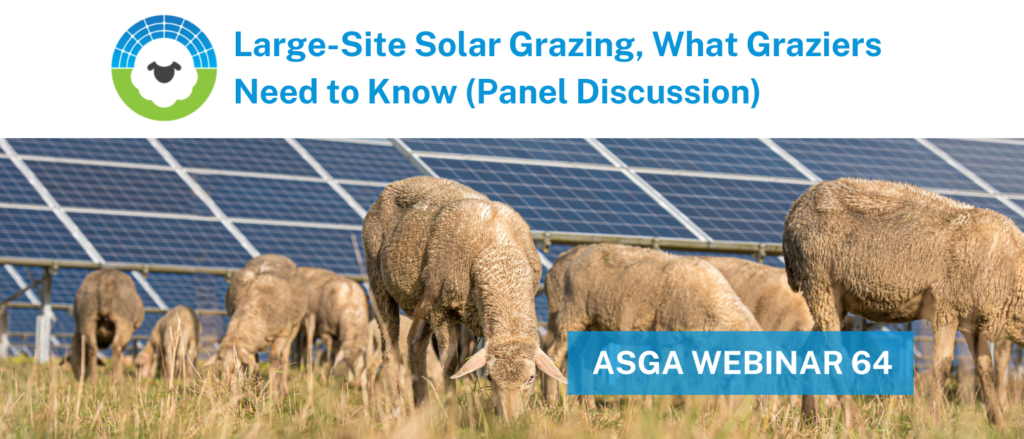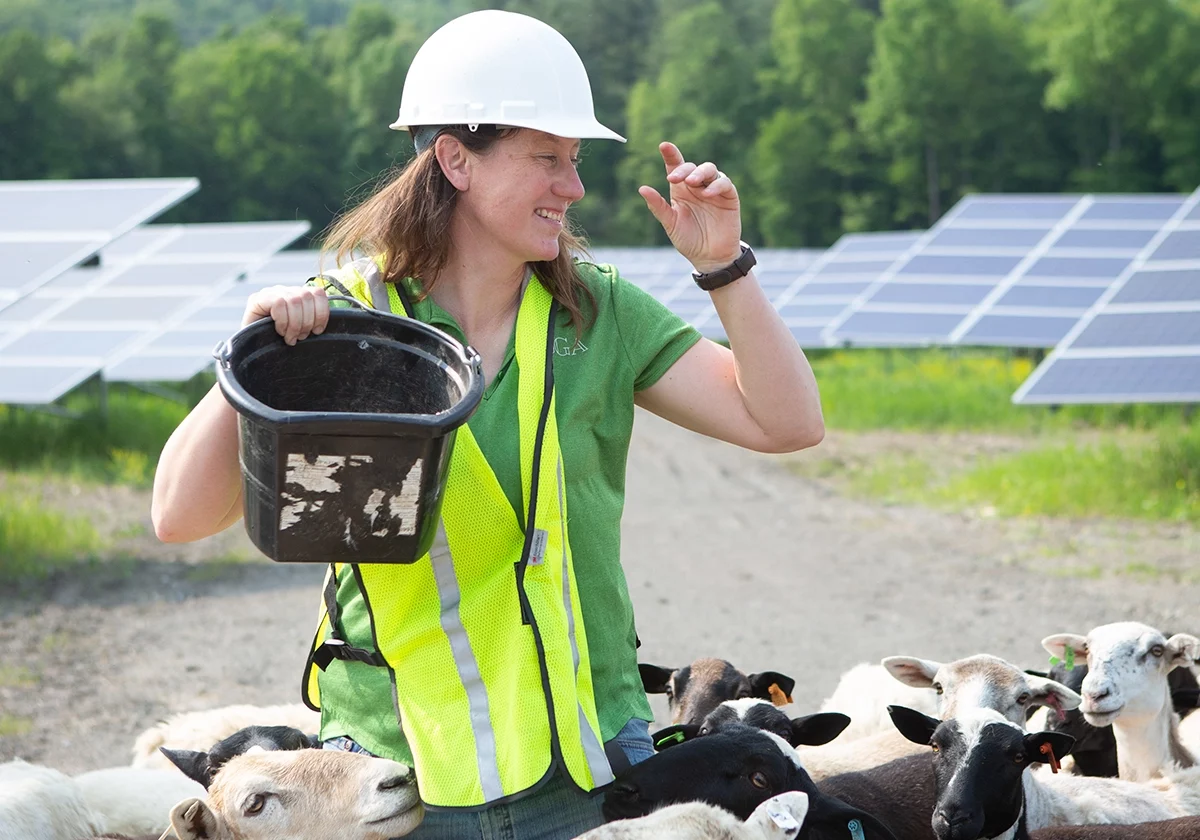ASGA Call #64 Replay: Large-Site Solar Grazing in CA and TX, What Graziers Need to Know (Panel Discussion)

What does it take to manage a utility scale grazing operation and how do you get started? What are the roadblocks and what are the success stories?
The U.S. is in the middle of an unprecedented expansion of large solar farms, and we could see up to 29 gigawatts of new large-scale solar developments in 2023 alone.
As utility-scale solar farms rapidly expand across the country, especially in regions where solar grazing has mostly been done on community-scale sites, there will be high demand to graze these larger solar sites.
Many farmers will be challenged to expand their grazing business or innovate new operations with fellow producers to match the requirements of utility-scale grazing.
ASGA members JR Howard, Ryan Indart, and Chad Raines participated in this informative panel discussion on utility-scale solar grazing and how to scale up grazing. They answered questions about utility-scale solar grazing and spoke about their own experience, including the challenges and opportunities they have encountered.
Ryan is a grazier based in California, while JR grazes in East Texas and Chad is based in West Texas, but looking at grazing opportunities in the eastern part of the state and beyond.
About the Speakers
Ryan Indart is a 4th-generatoin rancher who grazes 10,000+ acres at major solar sites in low-rainfall areas in California and Arizona. In 2009 Ryan purchased the sheep ranching enterprise from the family business and started Indart Solar Sheep Grazing, which is engaged in sheep ranching, direct marketing of lamb, dry land farming, custom sheep grazing services specializing in large utility scale solar projects and custom farm work. He currently grazes around 3,800 Targhee/Finn Ewes, 200 Composite Terminal Sire Ewes.
JR Howard grazes utility-scale solar sites in rain-rich East Texas where rainfall can hit 50 inches per year. He and his family own/operate Texas Solar Sheep focusing on utility scale grazing. They currently run about 3500 ewes. JR is the current President of the Texas Dorper Sheep Association and on the national board of directors for the American Dorper Sheep Breeders Society.
Chad Raines is a sheep rancher from Lamesa in West Texas who’s just getting started with solar grazing and plans to build a business around large-site operations, likely far from his ranch where he sees about 15″ of rainfall annually (7′ over the last several years). He runs approximately 3,000 Dorper ewes and was a 4th generation cotton farmer before he started raising sheep. Chad originally began raising sheep to transition his land to “organic”, but continued to raise sheep rather than organic row crops. All of his land is cropland rather than native pasture. He does a great deal of intensive grazing on his land and does targeted grazing for others. Currently, all of Chad’s sheep are in New Mexico grazing overwintering alfalfa fields. He has also target grazed organic cotton farms and a tree farm.


